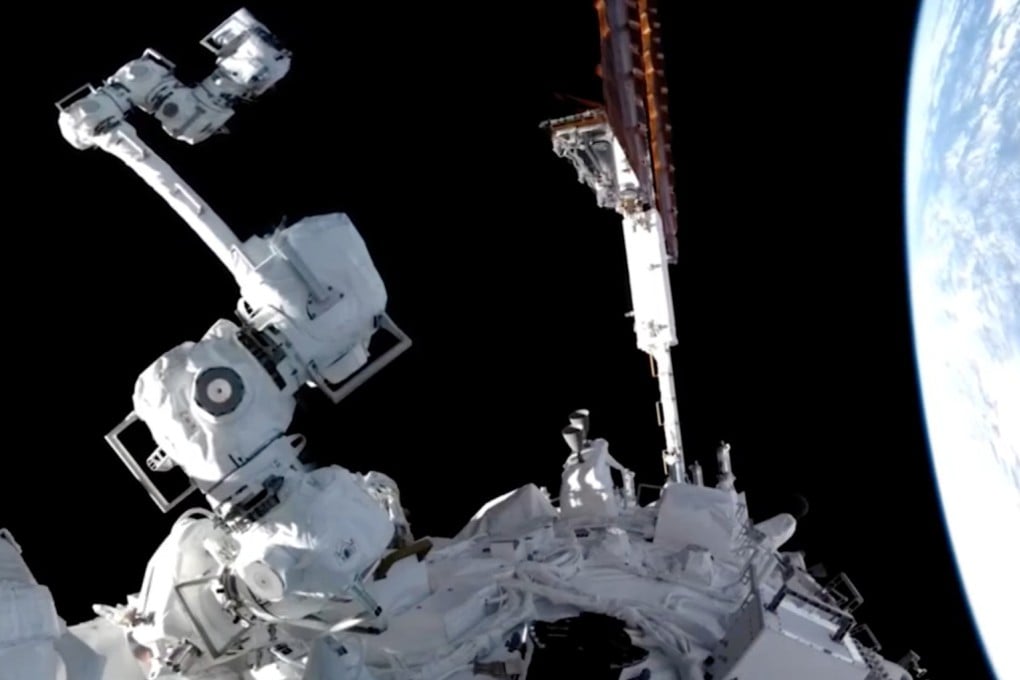Advertisement
Chinese space station’s new robotic arm flexes muscles during in-orbit tests
- The arm is suited for tasks that require agility and precision, such as the installation of scientific instruments and repairing equipment
- China aims to complete construction of its Tiangong space station by the end of this year
Reading Time:2 minutes
Why you can trust SCMP

A seven-jointed robotic arm on China’s Tiangong space station has completed in-orbit tests, allowing for more agility and precision in tasks such as moving supplies and repairing equipment.
The arm, which is 5 metres (16.4 feet) long and mounted on the recently launched Wentian lab module, performed a series of actions including disengaging from its base and crawling on the surface of the space station, according to a video released by the China Manned Space Agency on Tuesday.
While crawling, it docked with and undocked from four adaptors on the space station’s surface to make sure they were working. The arm also checked the space station’s solar arrays and external mounting points, the agency said.
Though only half the size of the 10-metre robotic arm on Tiangong’s core module, the smaller arm is more agile and suited for tasks that require higher positioning accuracy, such as the installation of scientific instruments.
Advertisement
It will be responsible for supporting the astronauts’ extravehicular activities, moving supplies, and maintaining and repairing the space station’s exterior. It will also maintain and repair an optical space telescope named Xuntian, which will share an orbit with Tiangong starting in 2024.
The smaller arm can carry payloads of up to three tonnes (3.3 tons), which is about one-eighth of the large arm’s ability. The two arms can work separately or with each other to cover a larger area outside the space station, according to the agency.
Advertisement
Advertisement
Select Voice
Choose your listening speed
Get through articles 2x faster
1.25x
250 WPM
Slow
Average
Fast
1.25x
